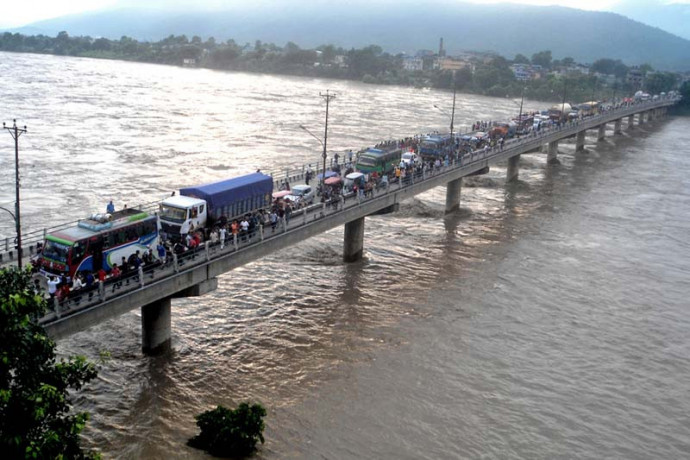Narayani River: Nurturing the Heartland of Nepal Professional
Nov 30th, 2023 at 10:08 Blogs Kathmandu 511 views Reference: 1173Location: Kathmandu
Price: Contact us
Narayani River: Nurturing the Heartland of Nepal
Introduction:
Flowing through the southern plains of Nepal, the Narayani River is a vital lifeline that sustains the landscapes, communities, and biodiversity of the region. As one of the major tributaries of the Ganges, the Narayani River holds cultural, economic, and ecological significance for the people of Nepal. This article explores the geological origins, cultural importance, and environmental contributions of the Narayani River.
Geographical Origin and Course:
The Narayani River originates in the Himalayas, specifically in the district of Mustang in northern Nepal. As it descends from the high mountain ranges, it traverses through the diverse landscapes of central Nepal, including the picturesque valleys and hills of the Gandaki Zone. The river is formed by the confluence of several tributaries, including the Kali Gandaki and the Trishuli River.
The Narayani River then continues its journey southward, flowing through the Terai region, the fertile plains of southern Nepal. Along its course, it receives contributions from additional tributaries like the Seti and the Madi Rivers, before eventually joining the Ganges in India.
Cultural Significance:
The Narayani River basin is home to a mix of ethnic communities, each with its unique cultural identity shaped by the river's presence. The riverbanks are adorned with ancient temples, shrines, and ghats, reflecting the deep spiritual connection that the local population has with the Narayani. Pilgrims and devotees often gather along the river to perform religious rituals, emphasizing its sacred role in the cultural tapestry of the region.
The town of Devghat, situated at the confluence of the Narayani and Trishuli Rivers, is a significant pilgrimage site. Devotees from various parts of Nepal and beyond visit this sacred location to seek spiritual solace and participate in religious ceremonies.
Economic Contributions:
The Narayani River plays a crucial role in supporting the economy of the region. The fertile plains along its banks are ideal for agriculture, and communities engage in activities such as farming and fishing to sustain their livelihoods. The river's waters are utilized for irrigation, contributing to the success of agriculture in the Terai, known as the "grain basket" of Nepal.
Environmental Significance:
The Narayani River basin is rich in biodiversity, providing habitats for various flora and fauna. The river and its surrounding wetlands are home to numerous species of fish, birds, and other wildlife. The region's ecological diversity contributes to the overall health of the ecosystem and supports the well-being of both human and natural communities.
Challenges and Conservation Efforts:
While the Narayani River is a source of life, it faces challenges such as pollution, habitat degradation, and the impact of climate change. Human activities, including industrial discharges and improper waste management, contribute to the degradation of water quality.
Conservation efforts are underway to address these challenges, with a focus on sustainable water management, habitat restoration, and community engagement. Initiatives aimed at raising awareness about the importance of the Narayani River and promoting responsible environmental practices are essential for ensuring the long-term health of this vital watercourse.
Conclusion:
The Narayani River, with its origins in the lofty Himalayas and its journey through the heartland of Nepal, is a dynamic force that shapes the culture, economy, and environment of the region. As communities along its banks work towards sustainable practices and conservation, the Narayani River continues to stand as a testament to the interconnectedness of nature and human civilization, nurturing the land and its people for generations to come.


